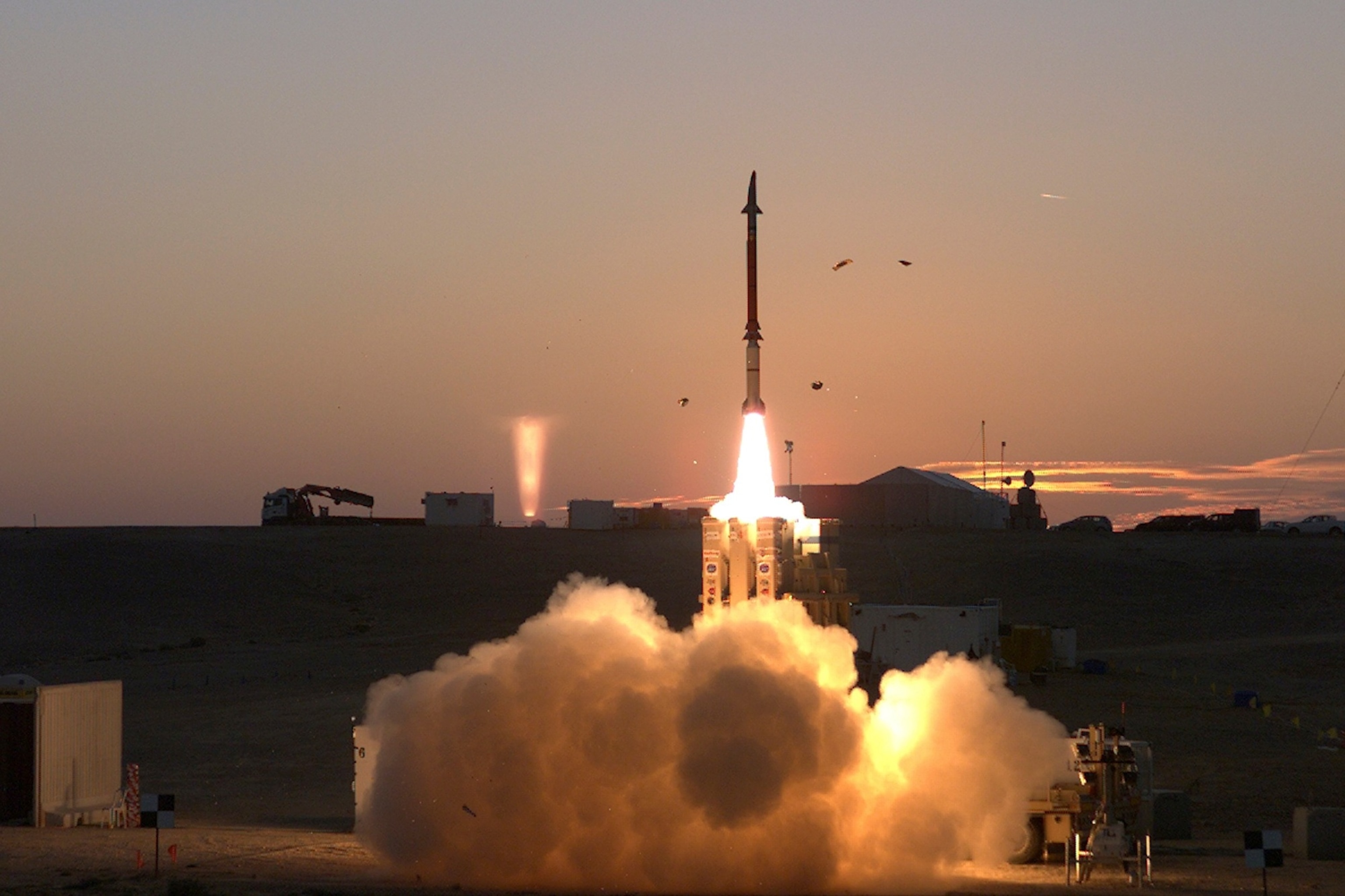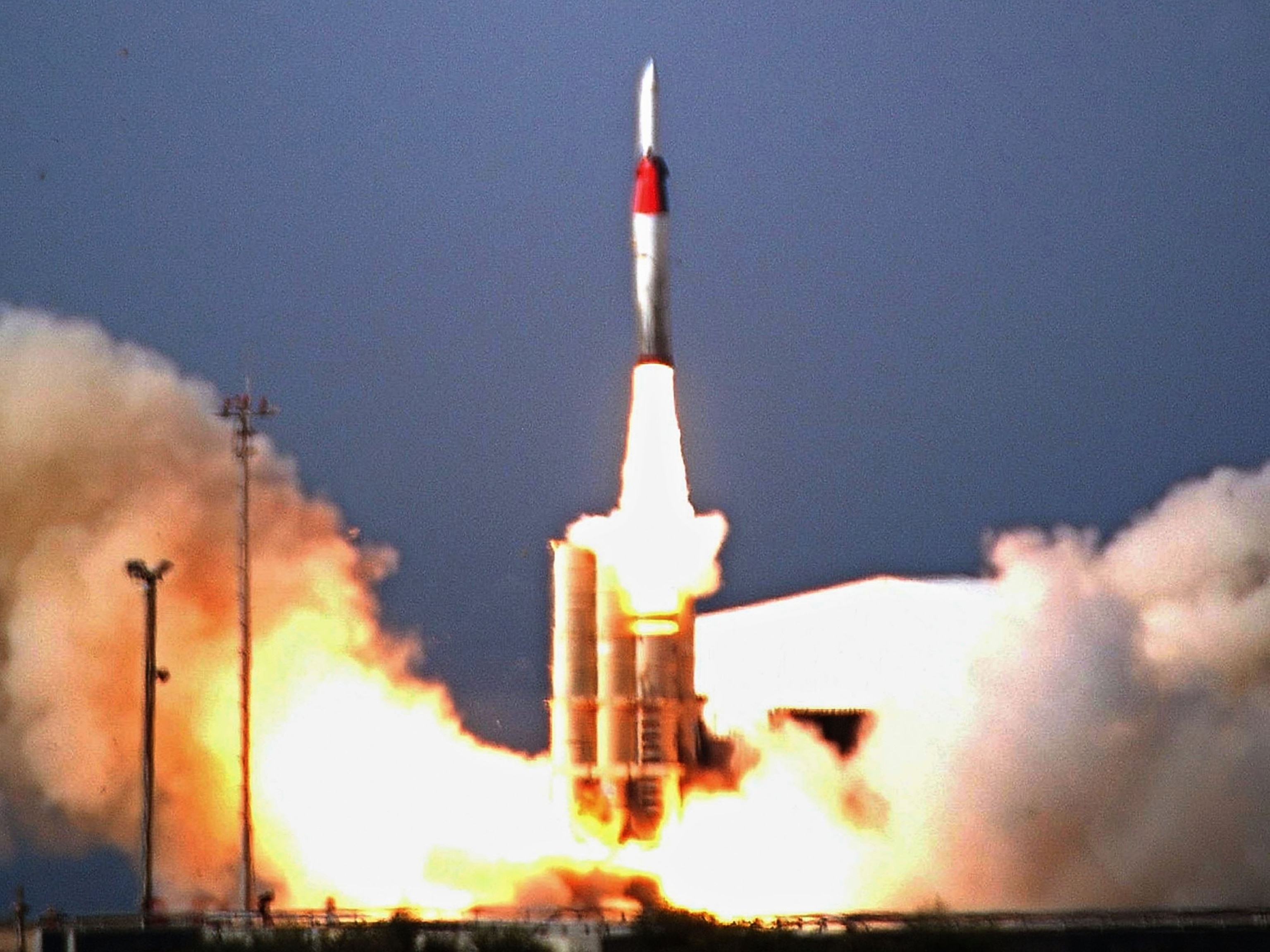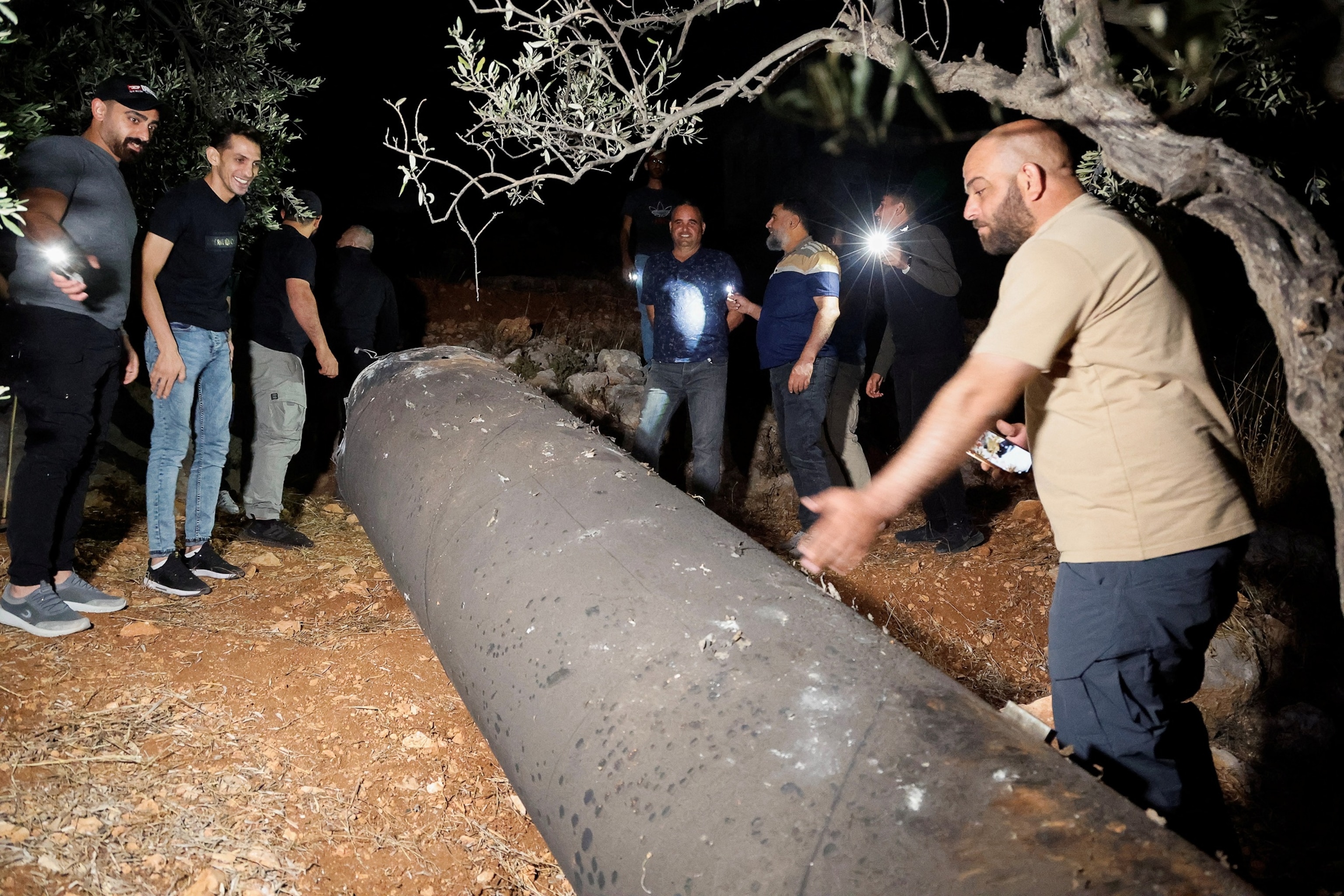Israel’s layered missile defense system was once again put to the test on Tuesday as Iran launched more than 200 ballistic missiles at Israel.
The Iron Dome air defense system garners most of the attention because it is used to bring down frequent incoming unguided short-range rocket systems fired at Israel by both Hezbollah and Hamas.
But targeting guided ballistic missiles that travel at higher altitudes, longer ranges, and faster speeds requires different intercept systems that are specifically designed to bring down ballistic missiles.
David’s Sling and the Arrow 2 and 3 are Israel’s two other home-grown air defense systems that are capable of bringing down medium-range and long-range ballistic missiles.

In this Dec. 21, 2015 file photograph provided by the Israeli Ministry of Defense shows a launch of David’s Sling missile defense system.
AP
Both systems along with the Iron Dome were utilized during Iran’s attack on Israel last April when 99% of the more than 300 drones, ballistic and cruise missiles launched by Iran were intercepted.
David’s Sling is designed to target medium and long-range missiles and has a range of 25 to 186 miles and produced by Raytheon and Rafael, the same Israel defense contractor that makes the Iron Dome.

n this photo released by Israel Aircraft Industries, an Arrow II anti-missile missile is successfully launched December 2, 2005 from an unnamed military base in central Israel.
Getty Images
The two-stage missile has no warhead, it destroys incoming ballistic missiles with the sheer force of impact, making it what is known as a “hit- to- kill” which has been characterized as hitting a bullet with a bullet given the high velocities involved.
The Arrow 2 and 3 systems are capable of handling much longer-range missiles like Intercontinental Ballistic Missiles (ICBM’s) that will likely travel at altitudes beyond the Earth’s atmosphere, a capability similar to the U.S. military’s THAAD (Terminal High Altitude Area Defense) air defense system.

Palestinians investigate a projectile, after Iran fired a salvo of ballistic missiles, in Tubas, in the Israeli-occupied West Bank, Oct. 1, 2024.
Raneen Sawafta/Reuters
The Arrow 3 system is believed to have a range of 1,500 miles and can reach an altitude of 100 miles.
The Arrow 2 is designed to explode near a missile to bring down an incoming missile, but the Arrow 3 is a hit-to-kill missile.
The Arrow 2 system was used most recently to shoot down long-range missiles fired at Israel by the Houthi militant group in Yemen, supposedly in support of Hamas and Hezbollah in their wars with Israel.
Israel’s advanced anti-missile systems, ‘David’s Sling’ and ‘Arrow,’ have once again proven their effectiveness in thwarting a missile attack from Iran. The recent incident highlights the crucial role these defense systems play in protecting Israel from potential threats in the region.
The attack, which was launched by Iran, targeted Israeli cities and military installations. However, thanks to the quick response of the Israeli Defense Forces (IDF) and the advanced capabilities of ‘David’s Sling’ and ‘Arrow,’ the missiles were successfully intercepted before they could cause any damage.
‘David’s Sling’ is a medium to long-range missile defense system designed to intercept incoming threats such as rockets, artillery, and drones. It is capable of detecting and tracking multiple targets simultaneously, making it a valuable asset in defending against complex missile attacks.
On the other hand, ‘Arrow’ is a more advanced system specifically designed to intercept ballistic missiles. It is part of Israel’s multi-layered missile defense strategy, which also includes the Iron Dome system for short-range threats.
The successful interception of Iran’s missiles by ‘David’s Sling’ and ‘Arrow’ not only protected Israeli civilians and infrastructure but also sent a strong message to Iran and other potential adversaries in the region. It demonstrated Israel’s commitment to defending its borders and deterring aggression from hostile actors.
The incident also underscores the importance of continued investment in defense technology and innovation. Israel’s anti-missile systems are the result of years of research and development, as well as collaboration with international partners. This ongoing effort to stay ahead of emerging threats has proven to be crucial in maintaining Israel’s security and stability.
In conclusion, the recent missile attack from Iran and its subsequent interception by ‘David’s Sling’ and ‘Arrow’ serve as a reminder of the constant threat faced by Israel and the critical role played by its advanced defense systems. As tensions in the region continue to escalate, these systems will remain a vital component of Israel’s national security strategy, ensuring its ability to defend against any potential threats that may arise.



